Caméra astronomique monochrome refroidie USB3.0 ZWO ASI461MM Pro (ASI461MM-P)
ZWO ASI461MM-P








Caméra astronomique monochrome refroidie USB3.0 ZWO ASI461MM Pro (ASI461MM-P)
ZWO ASI461MM-P
Why Purchase from All-Star Telescope?
Free Expert Support
Whether you are a first timer needing help with setting up or an enthusiast that can't quite make that one thing work, our expert staff are ready to support your needs. With decades of knowledge and first hand experience we've been there and we can help you through it!
Stress Free, Secure Transactions
You can trust purchasing and delivery with All-Star Telescope. All of our transactions are 100% secure and Level 1 PCI DSS compliant thanks to Shopify's ShopPay platform. For additional protection, we insure 100% of the value of every shipment we make. If it get's lost during shipment, we replace it. If it gets damaged during shipment, we replace it. We make sure your product arrives exactly as you would expect it to; we promise.
We also ensure privacy protection. We never keep any of your credit card information on file and any of your personal data is stored according to our policies.
30 Day Return Policy
Buy with confidence knowing that we accept returns up to 30 days after purchase. We want you to have something you will actually use and we are confident that we keep good quality products in our store with No Junk.
Price Match Promise
Shipping around for the best price is tough, we make it easier by offering the best pricing in the market. But if you find a better price on an in-store item somewhere else we will match it!
Description du produit
Important : veuillez utiliser une alimentation 12 V séparée plutôt que le concentrateur d'alimentation de l'ASIAIR Pro, car le concentrateur ne peut pas fournir suffisamment d'ampérage pour alimenter les refroidisseurs TEC de la caméra.
À la demande générale, nous présentons maintenant l'ASI461MM Pro. L'ASI461MM Pro adopte le capteur Sony IMX461 de format moyen. Il dispose d'un ADC 16 bits natif avec 65536 niveaux, d'une structure rétroéclairée et d'une efficacité quantique élevée, ainsi que d'excellentes performances en imagerie DSO, en imagerie de la Voie lactée et en recherche scientifique. Il présente un bruit de lecture très faible et un bruit de motif fixe visible presque nul, le tout à près de 102 MP !
Voici quelques-uns des points saillants :
- Capteur rétroéclairé – améliore la sensibilité et réduit le bruit
- Format 3,4" avec une taille de pixel de 3,76 µm – idéal pour de nombreux types de télescopes
- ADC 16 bits – offrant une plage dynamique élevée
- Une impressionnante capacité de puits de 50,3 ke, contribuant à réduire le problème des étoiles saturées, par exemple
- Résolution extrême de 11656x8750 – avec le mode Bin2, la caméra peut fonctionner à une résolution de 5826*4375 et une taille de pixel de 7,52 um.
De plus, il présente non seulement une valeur QE très élevée avec un pic à environ 91 %, mais également un bruit de lecture ultra-faible de 1,0e. Si vous recherchez un appareil photo monochrome grand format pour l'astrophotographie, vous ne pouvez pas vous tromper avec l'ASI461MM Pro.
100 mégapixels
L'ASI461MM Pro est une caméra de 100 MP avec un grand capteur de 44 mm × 33 mm et une haute résolution de 11656 × 8750. Le pixel de 3,76 µm accueille une capacité de puits complète impressionnante de 50,3 ke. En mode Bin2, vous pouvez obtenir une capacité de puits complète encore plus grande de 198 ke et une taille de pixel plus grande de 7,5 µm × 7,5 µm.
Pas de lueur d'ampli
Les capteurs CMOS traditionnels produisent une faible source de lumière infrarouge pendant le fonctionnement, ce qui est assez souvent observé dans le coin des images non étalonnées. C'est le signe révélateur d'une « lueur d'ampli ». Comme l'ASI461MM Pro utilise un circuit à lueur d'ampli nulle, vous n'aurez pas à vous soucier de la lueur d'ampli même lorsque vous utilisez une imagerie à gain élevé et à longue exposition. Remarque : cette technologie a déjà été implémentée dans le micrologiciel. Aucune opération logicielle n'est nécessaire.
Anti-rosée
L'ASI461MM Pro est équipé d'un élément chauffant en polyimide qui se place au-dessus de la fenêtre de protection. Il chauffera la fenêtre pour éviter tout problème de rosée. La consommation électrique de l'élément chauffant est d'environ 5 W. Vous pouvez désactiver cette fonction dans votre logiciel d'imagerie si vous souhaitez économiser de l'énergie.
Refroidissement TEC à deux étages : courant d'obscurité ultra-faible
Grâce au refroidissement TEC en deux étapes, l'ASI461MM Pro peut abaisser la température du capteur CMOS à plus de 35 degrés Celsius en dessous de la température ambiante, ce qui peut réduire considérablement la génération de courant d'obscurité et le bruit du capteur même pendant les temps d'exposition prolongés.
La technologie unique de suppression du courant d'obscurité peut réduire encore davantage le bruit du courant d'obscurité. Lorsqu'il est refroidi à 0 °C, le bruit du courant peut être aussi faible que 0,003 e/s/pix, ce qui est totalement négligeable ! Avec une exposition de 300 s, cela ne génère que 0,7 e de bruit de courant d'obscurité au total... encore plus faible que le bruit de lecture de l'appareil photo. Et si la température de refroidissement atteint -20 °C, le bruit du courant d'obscurité peut même tomber à 0,00024 e/s/pix, un chiffre totalement négligeable !
Mémoire USB 3.0 et 256 Mo DDR3
L'ASI461MM Pro est équipé d'une interface de transmission USB 3.0 et d'un cache DDR3 intégré de 256 Mo (2 Go) pour assurer une transmission de données stable et sécurisée. En cas d'exposition prolongée, il évite efficacement la perte d'image et réduit considérablement l'effet de lueur causé par une vitesse de lecture lente.


Caractéristiques
| Résolution | 11656 x 8750 |
| Format | 3,4" |
| Taille des pixels | 3,76 µm |
| Diagonale | 55 mm |
| ADC | 16 bits |
| Puits complet | 50,3 ke |
| Pic de l'assouplissement quantitatif | Environ 91% |
| Bruit de lecture | 1.0e |
| Fps max. | 3.77 |
| Distance de mise au point arrière | 56 mm |


Qu'y a-t-il dans la boite
Articles, vidéos et liens supplémentaires
External Links
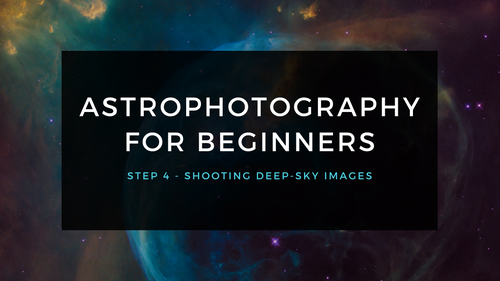
Astrophotographie pour les débutants Étape 4 : Prendre des images du ciel profond
Prendre des photos du ciel profond peut être intimidant, heureusement, il existe un processus simple à suivre pour vous permettre d'obtenir de superbes photos ! Voici le processus typique pour pren...
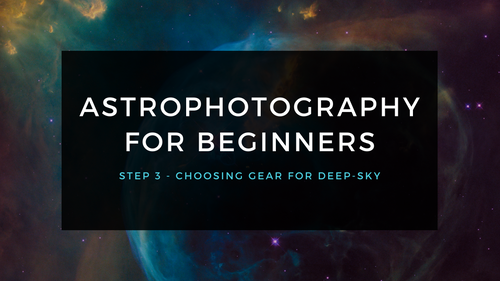
Astrophotographie pour les débutants Étape 3 : Choisir l'équipement pour l'imagerie du ciel profond
L'utilisation d'un capteur d'étoiles vous permet d'acquérir de l'expérience avec les principes fondamentaux de l'imagerie du ciel profond. Tirer sur la Lune vous permet d'acquérir de l'expérience ...
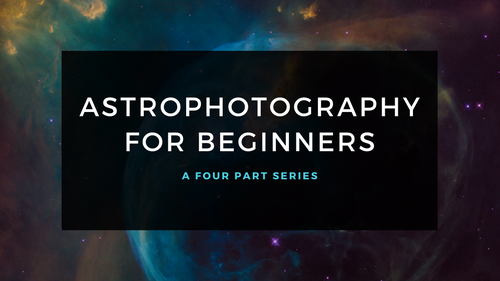
Astrophotographie pour les débutants - Commencer ici : Entrer dans l'astrophotographie étape par étape
Photographier le ciel nocturne n'a jamais été aussi populaire, ni aussi facile. Le choix d'équipement n'a jamais été aussi meilleur, ni plus abordable. Cependant, selon les conseils donnés par Dick...
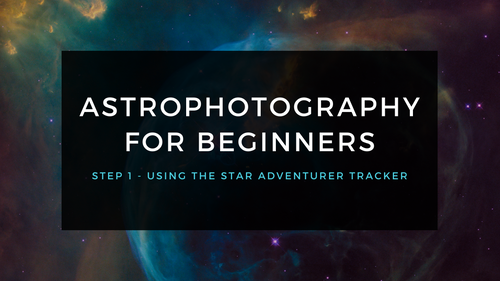
Astrophotographie pour les débutants Étape 1 : Utilisation du Star Adventurer Tracker
Le moyen de loin le plus économique et le plus simple de capturer de belles images de la Voie lactée et de grands objets du ciel profond comme la galaxie d'Andromède (illustré ici) est d'utiliser u...
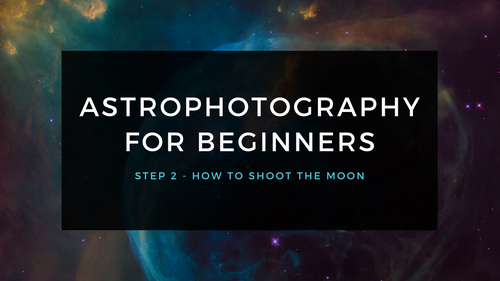
Astrophotographie pour les débutants Étape 2 : Comment photographier la Lune
Les gros plans de la Lune sont gratifiants et constituent un moyen facile d'apprendre à photographier à travers votre télescope. Bien que de bons résultats soient possibles avec un appareil photo d...

